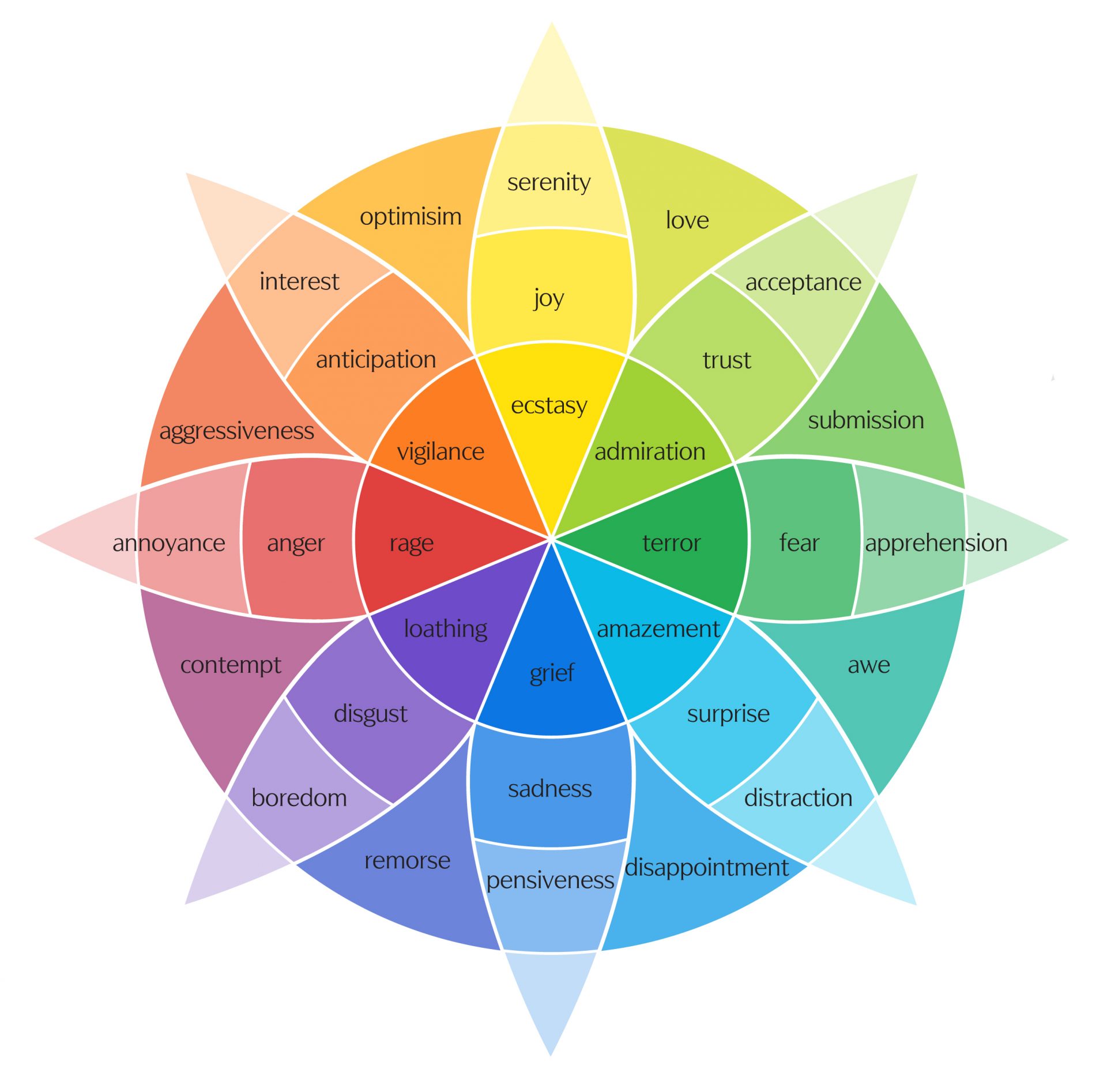Do you struggle to make sense of how you’re really feeling? An ‘emotion wheel’ could be just the tool you’re looking for.
When was the last time you took a step back to consider how you were feeling? In our fast-paced world, it’s all too easy to push aside or ignore our emotions – despite the fact that they inform the way we see and respond to the world.
Of course, pushing aside or ignoring your emotions doesn’t make them go away: in fact, it can make them stronger. There’s a reason why so many of us struggle with emotional outbursts or feelings of numbness – when we pretend our feelings don’t exist, we end up making ourselves feel worse in the long run.
As such, taking time to recognise and connect with your emotions is incredibly important. The tricky bit, however, is knowing exactly where to start.
That’s where the concept of an ‘emotion wheel’ comes in. The visual prompt – first created by psychologist Robert Plutchik – may look confusing, but it’s relatively simple to use.
Designed to act as a visual aid to help you respond rather than react to your emotions, emotion wheels tend to be made up of six to eight primary emotions, around which the compound emotions (those which are the product of two primary emotions) are displayed. Typically, the most intense emotions – such as rage, ecstasy and grief – are displayed at the very center of the wheel, with less intense feelings – such as annoyance or apprehension – displayed around the outside.
While emotion wheels have been around for a while, they’ve grown increasingly popular over the last couple of months – according to analysis of Google search data by the CBD brand Eden’s Gate, searches for emotion wheels are up 23% in the UK since August. But how do they work? And what are the benefits of using one?
According to the career coach Jaz Broughton, emotion wheels allow us to feel more understood. “A huge part of coping with our feelings is being able to recognise, define and articulate them; primarily for ourselves and then if we choose, to others,” she explains.

“[Emotion wheels] are powerful in showing us the full range of emotion we have permission to have and that we lose out by trying to keep it simple. When I use this tool with my clients, it shows them that they are allowed to take up space with their emotions – they don’t have to put a neat label on it because emotions rarely are the neat things we want them to be. The dialogue that is at the end of answer, ‘How are you feeling?’ with something other than ‘Fine’ can be the most powerful.”
While the idea of using a wheel to work out how you’re feeling might feel weird at first, it’s clear that doing so could have a whole host of benefits. Our emotions play a huge role in our overall wellbeing – and simply understanding how you’re feeling can make it easier to respond to your emotions in a healthy and constructive way.
For example, if you identify that you’re feeling angry, you can take some time to think about why that’s the case, and if there’s anything you can do to calm yourself down. It’s a simple intervention – but it allows you to stay on top of your emotions, rather than letting them sit in the driving seat.
Indeed, as Tyler Woodward, wellness expert and CEO of Eden’s Gate, explains: “[Using an emotion wheel] seems like such a simple task, kind of like naming colours or shapes as a child, but it can be easy to lose touch with our own emotions in an increasingly distracting digital world. Emotion wheels can be a great tool for helping us to recognise and respond appropriately to our own emotions.”
So, next time you’re feeling a bit all over the place, why not sit down and see if you can pin point how you’re feeling? Not only will it stop you from making any rash decisions, but it’ll also give you a moment to stop and breathe – something we could all do with more of these days.
Images: Getty
Source: Read Full Article
